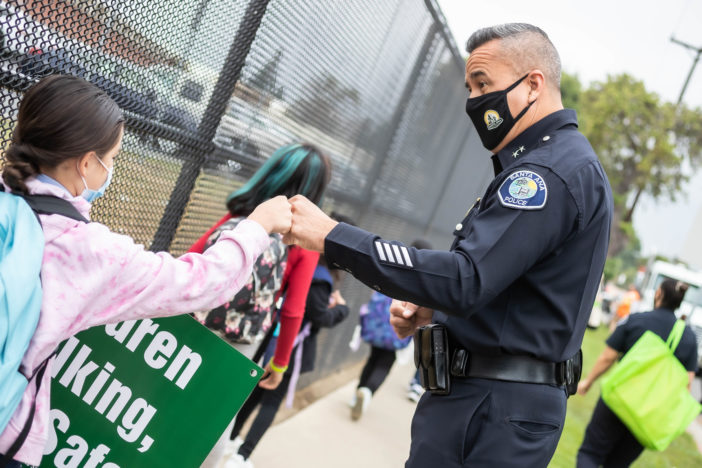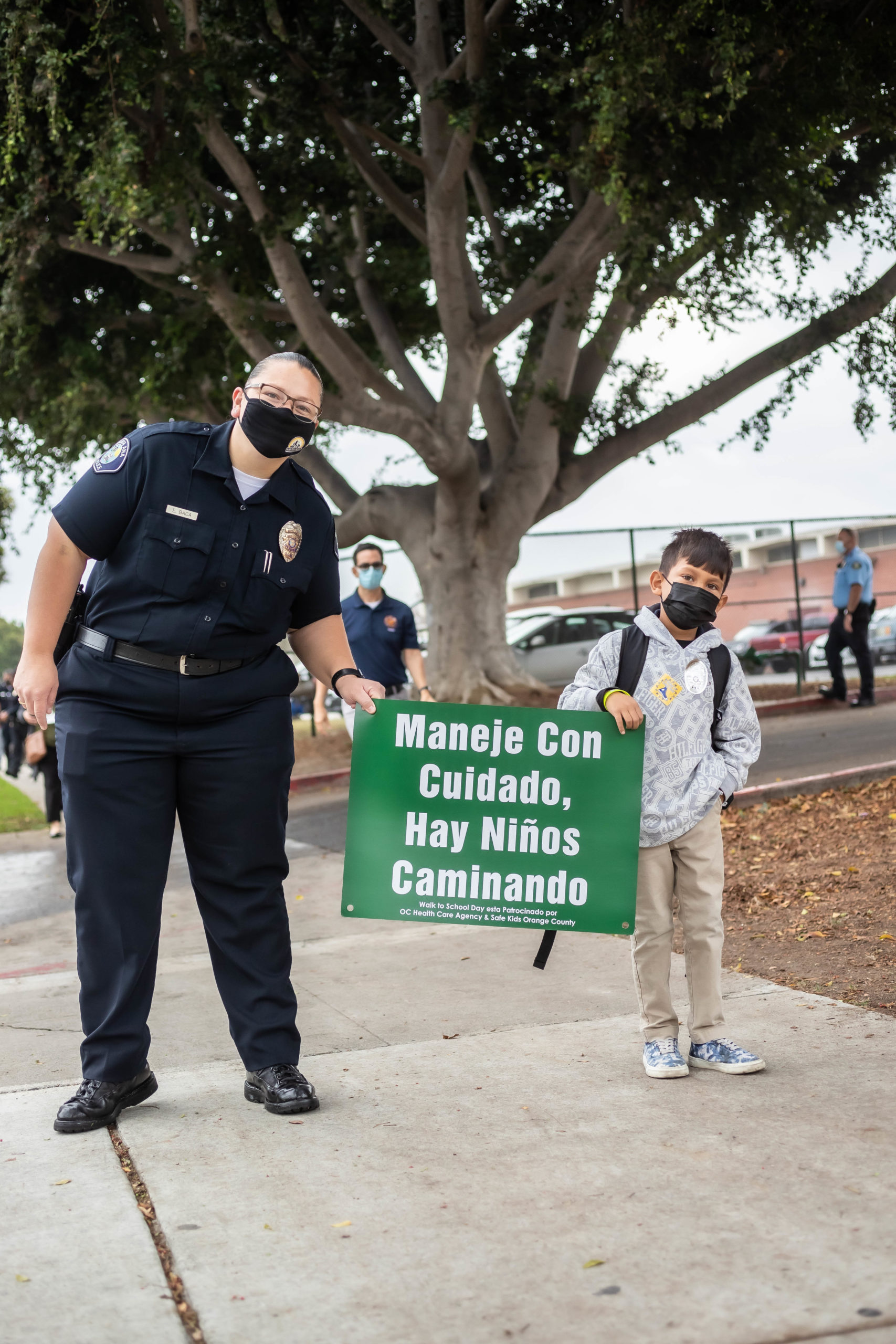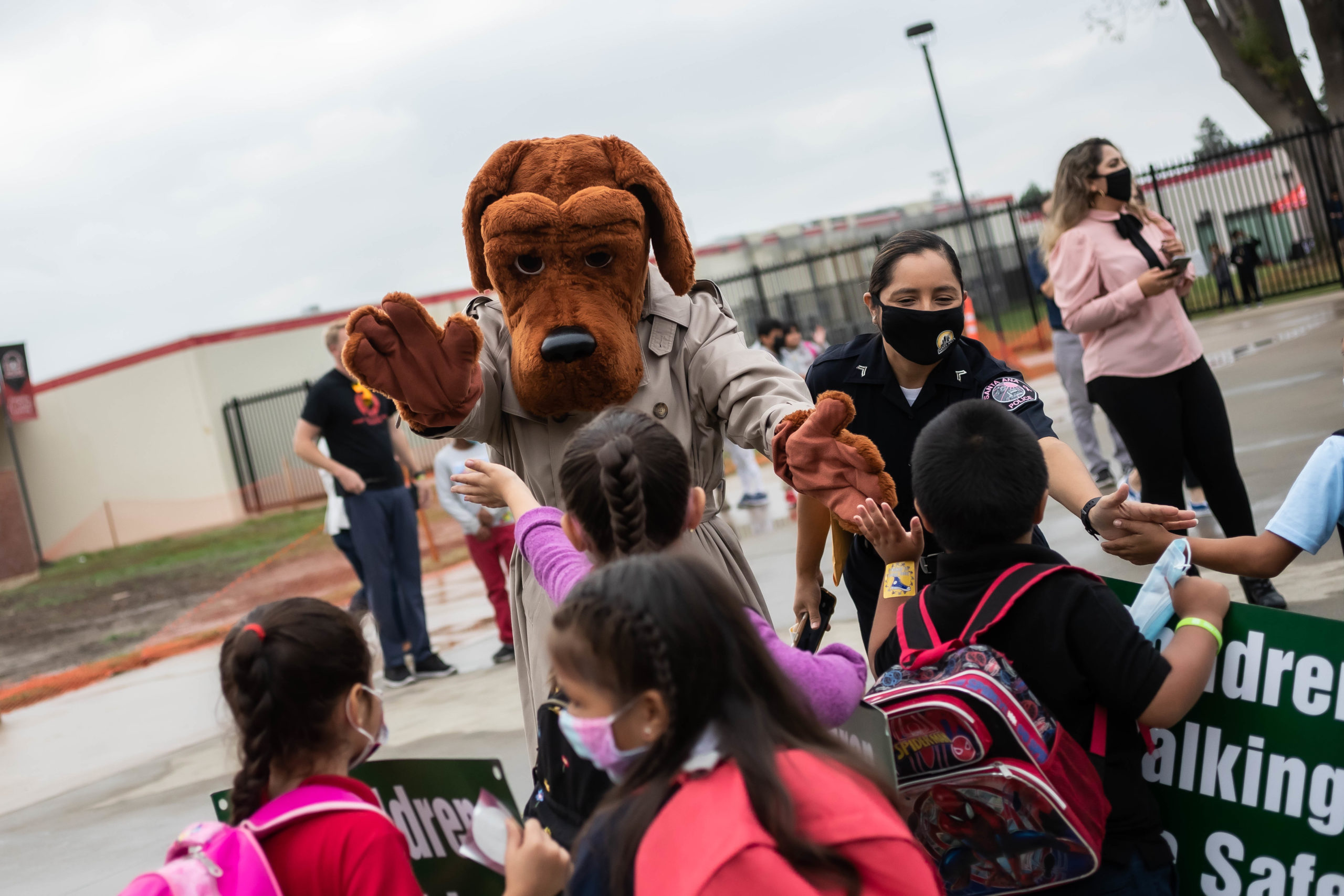In Santa Ana, about 100 children from the McFadden Institute of Technology were escorted by a collection of police officers, crossing guards, Star Wars characters, and McGruff the Crime Dog on Walk to School Day.
Meanwhile, kids at Handy Elementary in Santa Ana were joined by parents and families for the trek to school.
“I have participated in the National Walk to School Day on numerous occasions and have found it to be one of our most important outreach programs of the year,” Santa Ana Deputy Chief Enrique Esparza said.
Police and volunteers staged about two blocks from campus and led a festive procession to the school where they were greeted with a school assembly and celebration. Each participating student also received their own pocket pedometer.

Santa Ana Police Department participates in Walk to School Day.
Photo provided by the Santa Ana Police Department
A tradition
Launched in 1997 as Walk Our Children to School Day, the event has grown and flourished. National Bike to School Day was added in 2012 and is held annually in May. In many areas, the two modes are combined in Walk and Bike to School Days.
National Walk to School Day now exists in 40 countries as well as all 50 states, Washington D.C., and Puerto Rico.
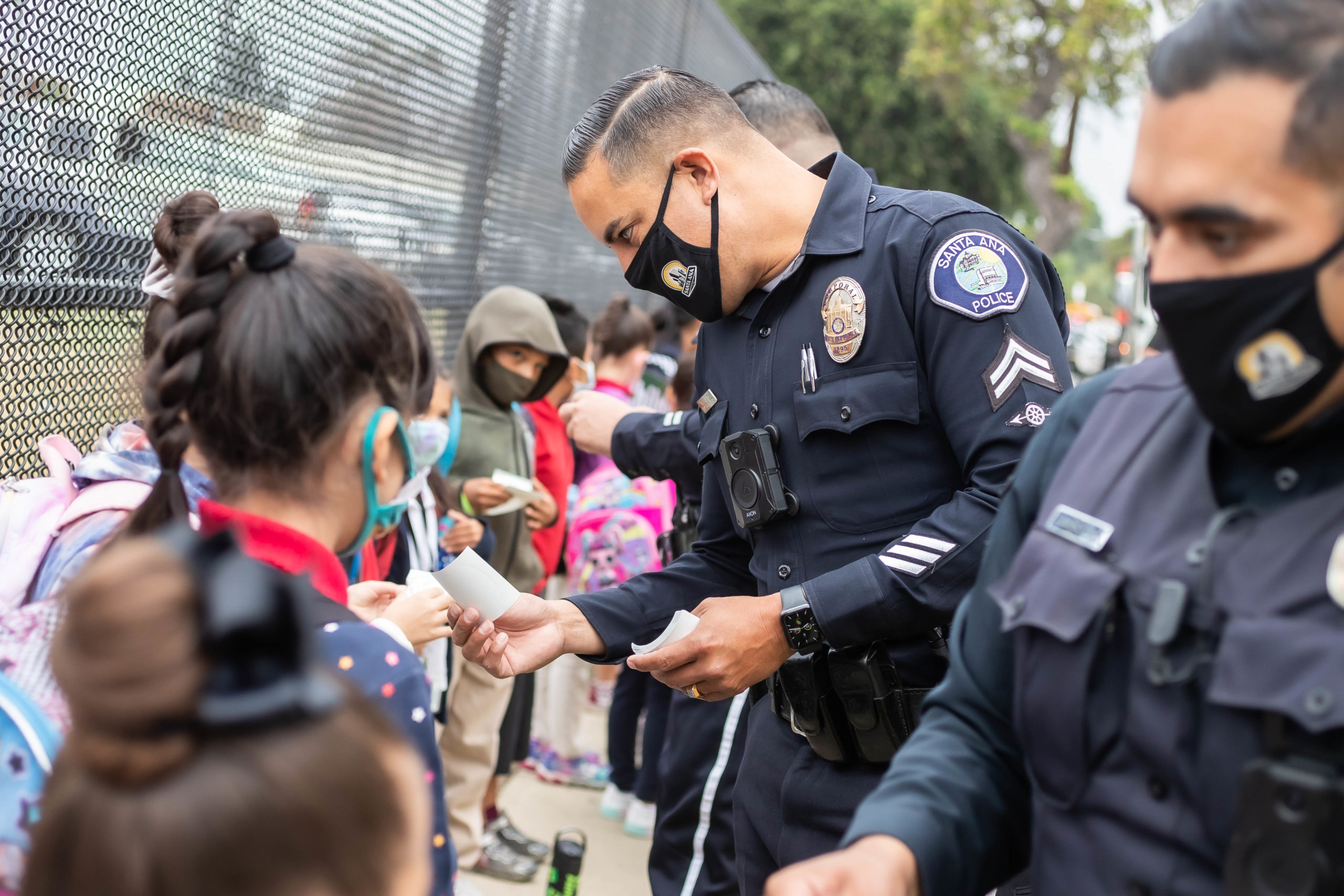
Santa Ana Police Department participates in Walk to School Day.
Photo provided by the Santa Ana Police Department
Each year, police, safety personnel, and volunteers from across the country teach students about safe commuting practices, such as obeying traffic signs, signals and crossing guards. The students also learn about the importance of helmets and being aware of their surroundings.
Santa Ana was forced to suspend the event last year due to the COVID-19 pandemic forced events to be canceled or moved to virtual options last year.
Each year, one school is chosen for the police escort by the Santa Ana Unified School District.
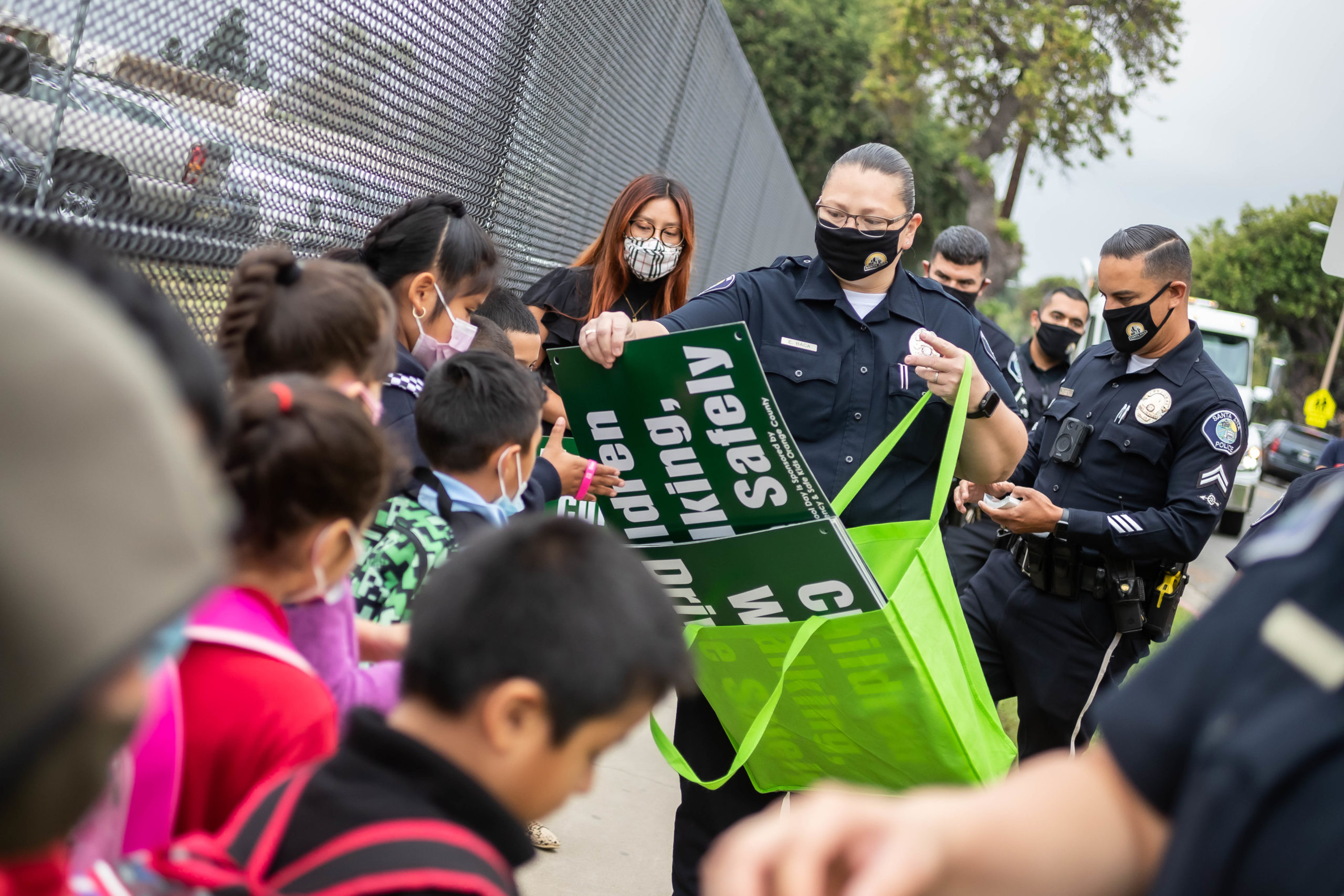
Santa Ana Police Department participates in Walk to School Day.
Photo provided by the Santa Ana Police Department
On walkbiketoschool.org, the website for the National Center for Safe Routes to School, which launched the events, there were 30 official school entrants in Orange County and 2,672 nationally — down from a high of 5,612 in 2018.
Estimates on the percentage of children who walk to school vary widely. A longitudinal survey by the National Center for Safe Routes to School found that between 1969 and 2009, the percent of students in grades K through eight who walk to school fell from 48 to 13 percent. A Centers for Disease Control study in 2016 found in more than 60 percent of schools, 10 percent or less of students walked to school on an average school day.
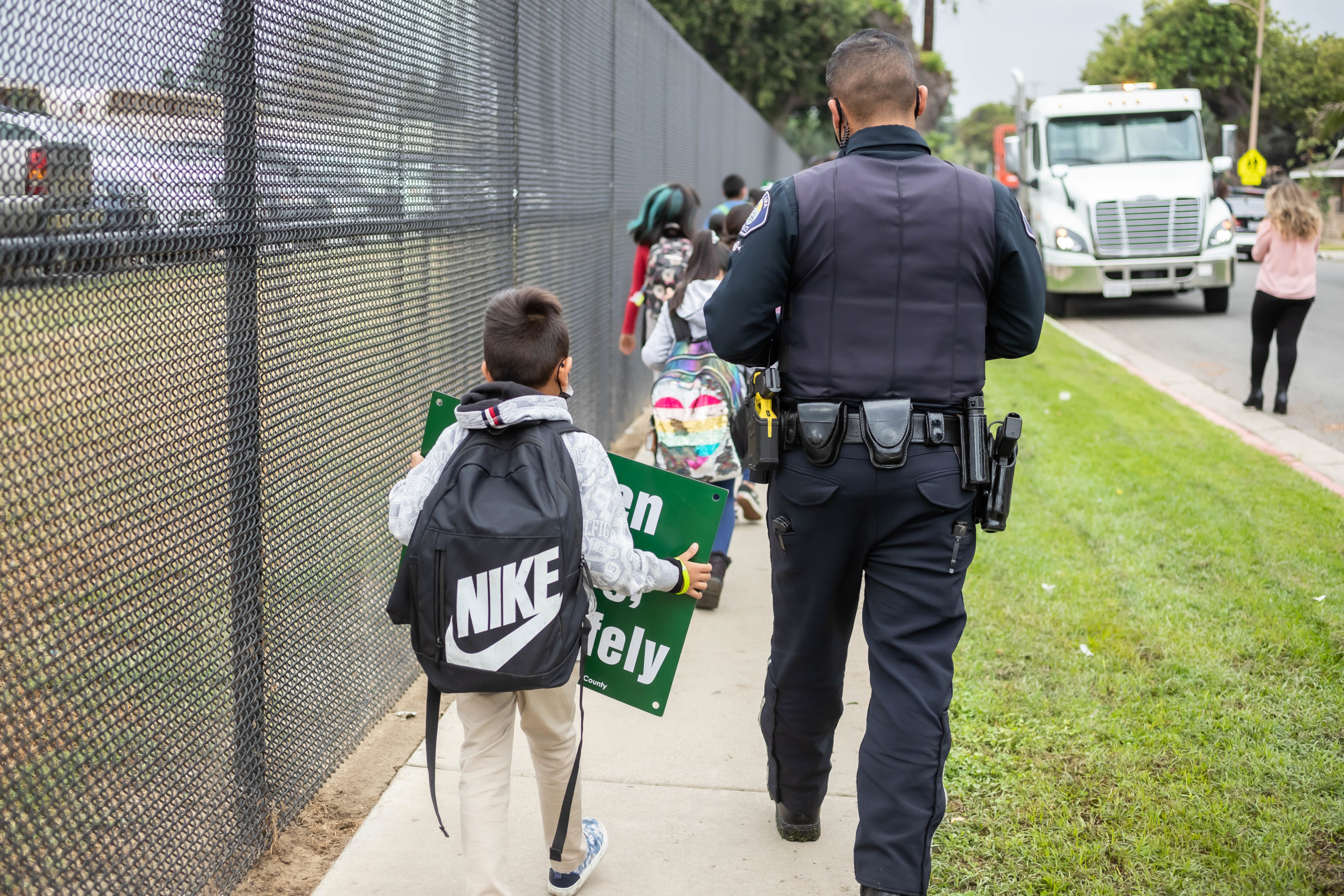
Santa Ana Police Department participates in Walk to School Day.
Photo provided by the Santa Ana Police Department
According to research from the University of Toronto, walking to school has a host of benefits, including higher academic performance, attention/alertness, higher degrees of pleasantness and lower levels of stress, increased metabolism, improved cardio fitness, lower weight and BMI, and higher levels of happiness, excitement, and relaxation on the journey to school.
Being accompanied by the cops, Star Wars troopers and costumed crossing guards just makes it that much more of a party.
“It is a win for us anytime we get to interact with the kids in our city as we gain their trust and they realize how important they are to us,” Esparza said.
 Behind the Badge
Behind the Badge
